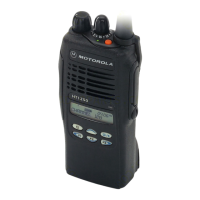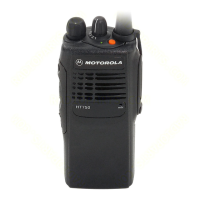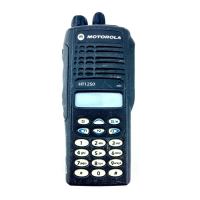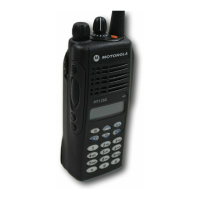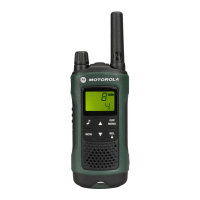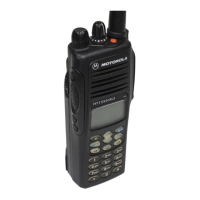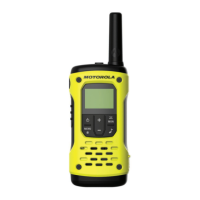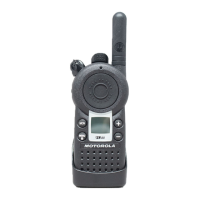Low Band, 800 MHz, PassPort & 900 MHz Theory of Operation: Trunked Radio Systems 7-15
In the receive mode, U250 pin 19 is low or grounded. This activates the receive VCO by enabling the
receive oscillator and the receive buffer of U250. The RF signal at U250 pin 8 is run through an
injection amplifier, Q304. The resulting RF signal is the LO RF INJECTION and it is applied to the
mixer at U301 (refer to 800 MHz Receiver Front End Schematic Diagram on page 9-418).
During the transmit condition, when PTT is depressed, five volts is applied to U250 pin 19. This
activates the transmit VCO by enabling the transmit oscillator and the transmit buffer of U250. The
RF signal at U250 pin 10 is amplified by Q251 and injected into the input of the PA module (U101
pin1). This RF signal is the TX RF INJECTION. Also in transmit mode, the audio signal to be
frequency modulated onto the carrier is received through the U201 pin 41.
When a high impedance is applied to U250 pin19, the VCO is operating in BATTERY SAVER mode.
In this case, both the receive and transmit oscillators as well as the receive transmit and prescaler
buffer are turned off.
7.9 Trunked Radio Systems
Trunked systems allow a large number of users to share a relatively small number of frequencies or
repeaters without interfering with each other. The airtime of all the repeaters in a trunked system is
pooled, which maximizes the amount of airtime available to any one radio and minimizes channel
congestion. A benefit of trunking is that the user is not required to monitor the system before
transmitting.
7.9.1 Privacy Plus Trunked Systems
Privacy Plus is a proprietary trunking protocol developed by Motorola which allows a large number of
users to share small amounts of frequencies without interfering with each other. The Privacy Plus
configuration consists of shared multiple channel repeaters. The Privacy Plus Trunked system
includes a Central Controller, which directs the users to the open channels. This kind of Trunked
system requires no monitoring of the channel as in conventional systems. The Central Controller
places the user in a queue to wait for a free channel. The Central Controller does the monitoring and
channels selection for the user.
7.9.2 LTR
™
Trunked Systems
LTR is a transmission based trunking protocol developed by the E. F. Johnson Company for primarily
single site trunking applications. In transmission trunking, a repeater is used for only the duration of a
single transmission. Once a transmission is completed, that repeater becomes available to other
users.
7.9.3 MPT Trunked Systems
MPT (Ministry of Post and Telecommunications) developed a signalling standard (MPT1327) for
trunked private land mobile radio systems. This standard defines the protocol rules for
communication between a trunking system controller (TSC) and user’s radio units. The protocol
offers a broad range of options which can be implemented in subsets according to user
requirements. Also, there is scope for customization for special requirements, and provision made to
further standardized features to be added to the protocol in the future. The standard defines only the
over-air signalling and imposes only minimum constraints on system design.
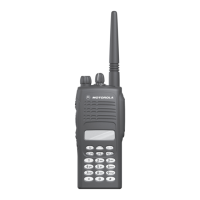
